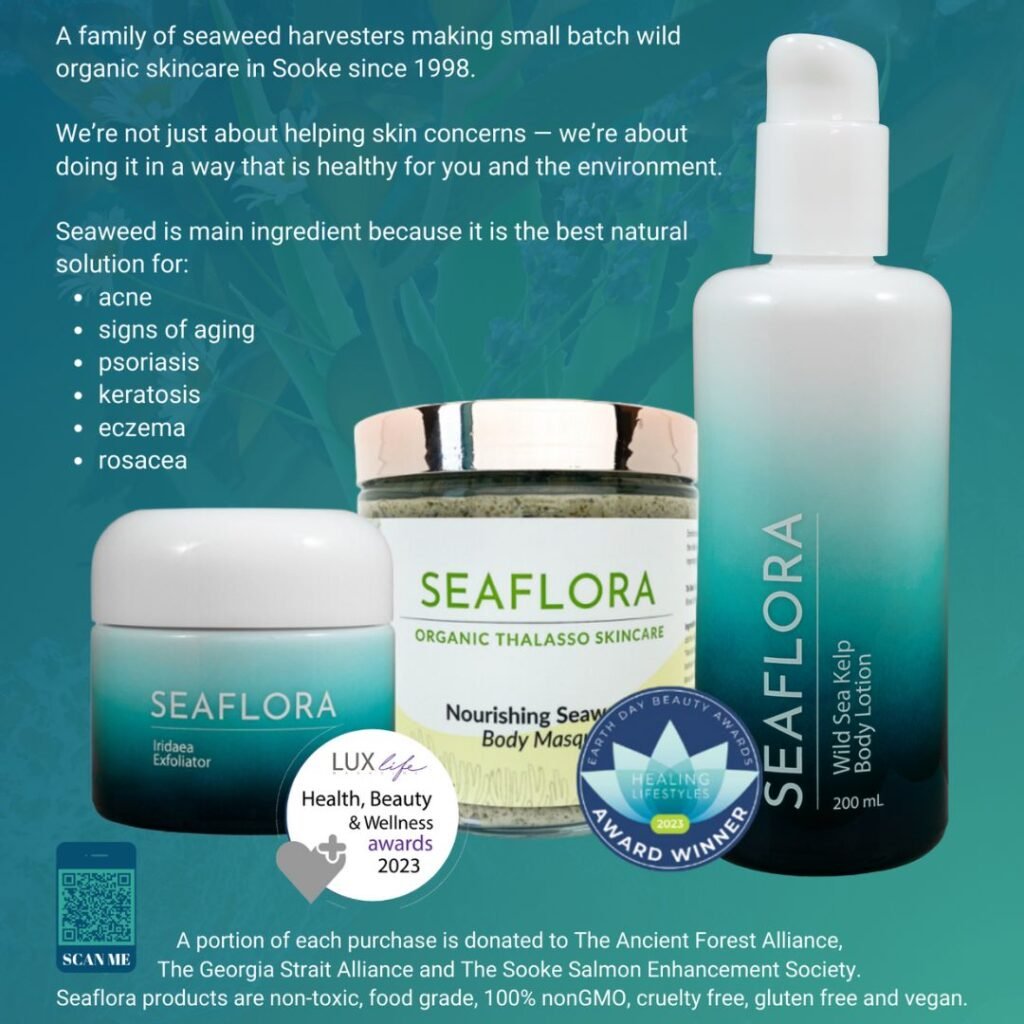The Power of Fatty Acids: Types, Benefits, & Dietary Sources
Ever wondered about the buzz around fatty acids? Skincare enthusiasts are often on the lookout for ingredients that can work wonders for their skin, and fatty acids are no exception. Fatty acids play a crucial role in skincare, offering a wide range of benefits that contribute to overall skin health and appearance. Understanding the significance of fatty acids in skincare can lead to more informed choices when selecting products for your skincare routine.
Essential Fatty Acids: The Basics
Essential fatty acids (EFAs), are truly the unsung heroes of our bodies. They are required for the normal functioning of all tissues, yet our bodies cannot produce them on their own. So, how do we get these essential nutrients? The answer lies in our diets and personal care products.
Eat Your Fatty Acids or Apply Them To Your Skin?
Fatty acids are organic molecules composed of chains of carbon atoms with hydrogen atoms attached. In skincare, fatty acids are typically derived from natural sources such as oils and fats. These molecules serve as building blocks for various skincare products, including cleansers, moisturizers, and serums. Fatty acids are classified based on their chemical structure into saturated, monounsaturated, and polyunsaturated fatty acids, each with its own set of properties and benefits for the skin.
Both consuming fatty acid rich sources such as seaweed and using it in skincare products can offer significant benefits for skin health. Eating seaweed provides essential nutrients that support overall health and skin vitality from within, while incorporating seaweed into skincare products allows for targeted delivery of its beneficial compounds directly to the skin. For optimal results, consider incorporating seaweed into your diet and skincare routine to harness its full potential for healthy, glowing skin. As always, it’s essential to choose high-quality seaweed products from reputable sources to ensure safety and efficacy, whether for consumption or topical use.
The Role of Fatty Acids in Health

Fatty acids, or fatty acid molecules, are more than just essential nutrients. They play a significant role in our health, affecting everything from inflammation to brain development and skin health. Let’s dive into the role of these tiny molecules in maintaining our well-being.
A high dietary intake of omega-6 fatty acids, particularly from seed oils, can increase the risk of diseases such as cardiovascular disease (CVD). This risk arises due to these polyunsaturated fatty acids competing in metabolism with certain omega-3 fatty acids using the same enzymes. Omega-6 fatty acids can also lower serum low-density lipoprotein cholesterol (LDL-C) and triglycerides while increasing high-density lipoprotein cholesterol (HDL-C), leading to a beneficial reduction in the total to HDL-C ratio.
On the other hand, omega-3 fatty acids can:
- Decrease the formation of inflammatory eicosanoids derived from arachidonic acid
- Play an essential role in neuronal growth and synapse formation, contributing significantly to brain development and function
- DHA, a type of omega-3 fatty acid, is a structural component of the skin and may help prevent premature aging and protect against sun damage.
Supplementation with omega-3 fatty acids may improve brain and heart health, reduce inflammation, and protect against several chronic conditions. However, it’s important to remember that the effects of fatty acids on health can vary based on factors such as individual health status, lifestyle, and dietary habits.
Benefits of Fatty Acids in Skincare
Fatty acids offer a multitude of benefits for the skin, making them essential components of skincare formulations. They help to moisturize and hydrate the skin, keeping it soft and supple. Fatty acids also play a key role in maintaining the skin barrier function, which is crucial for protecting against environmental stressors and preventing moisture loss. Additionally, certain fatty acids possess anti-inflammatory properties, making them effective in soothing irritated or inflamed skin. Regular use of skincare products containing fatty acids can result in smoother, more radiant-looking skin.
Essential Fatty Acids for Skin Health
There are several types of fatty acids commonly found in skincare products. Saturated fatty acids, such as stearic acid and palmitic acid, provide emollient properties and help to improve skin texture. Monounsaturated fatty acids, like oleic acid, are known for their moisturizing and softening effects on the skin. Polyunsaturated fatty acids, including omega-3 and omega-6 fatty acids, are essential for maintaining skin health and have anti-inflammatory benefits.
Fatty Acid Metabolism
Now that we understand the types of fatty acids and their impact on our health, let’s delve a bit deeper into how our bodies metabolize these important molecules. After all, it’s not just what we eat but also how our bodies process what we eat that influences our health.
Fatty acids are absorbed through a protein-mediated mechanism involving fatty acid transporters such as CD36, FABPpm, and FATP1-6. Once they are hydrolyzed by pancreatic enzymes, fatty acids enter the epithelial cells of the intestinal wall, where they reaggregate into triglycerides and become part of chylomicrons for transport in the bloodstream.
Lipoprotein lipase in tissues breaks down these chylomicrons to release fatty acids, which enter the cells for metabolism or are stored in adipose tissue. Glycerol released from the breakdown of triglycerides is converted to glyceraldehyde 3-phosphate, an intermediate in glycolysis, contributing to energy production. Long-chain fatty acids undergo beta-oxidation in mitochondria, generating acetyl-CoA, NADH, and FADH2 for the citric acid cycle.
Fatty Acids for A Health Skin Barrier

Essential fatty acids, such as linoleic acid and linolenic acid, are vital for maintaining healthy skin. These fatty acids cannot be produced by the body and must be obtained through diet or topical skincare products. Essential fatty acids help to strengthen the skin barrier, promote collagen production, and regulate oil production, making them essential for overall skin health and vitality.
Wild Mushrooms Offer Fatty Acids
Eating wild mushrooms can provide overall health benefits, including skin health, while incorporating them into skincare products can offer targeted benefits for the skin. However, it’s essential to exercise caution when foraging for wild mushrooms, as some varieties can be toxic if consumed. Always ensure that you properly identify mushrooms or consult with a knowledgeable expert before consuming them. Additionally, when using mushrooms in skincare products, opt for reputable brands with proven formulations to ensure safety and efficacy.
Agaricus bisporus (Button mushrooms):
- Palmitic (C16:0): 11.9 g/100g
- Stearic (C18:0): 3.1 g/100g
- Oleic (C18:1): 1.1 g/100g
- Linoleic (C18:2): 77.7 g/100g
- Linolenic (C18:3): 0.1 g/100g
Lentinus edodes (Shiitake mushrooms):
- Palmitic (C16:0): 10.3 g/100g
- Stearic (C18:0): 1.6 g/100g
- Oleic (C18:1): 2.3 g/100g
- Linoleic (C18:2): 81.1 g/100g
- Linolenic (C18:3): 0.1 g/100g
Pleurotus ostreatus (Oyster mushrooms):
- Palmitic (C16:0): 11.2 g/100g
- Stearic (C18:0): 1.6 g/100g
- Oleic (C18:1): 12.3 g/100g
- Linoleic (C18:2): 68.9 g/100g
- Linolenic (C18:3): 0.1 g/100g
Pleurotus eryngii (King oyster mushrooms):
- Palmitic (C16:0): 12.8 g/100g
- Stearic (C18:0): 1.7 g/100g
- Oleic (C18:1): 12.3 g/100g
- Linoleic (C18:2): 68.8 g/100g
- Linolenic (C18:3): 0.1 g/100g
Dry Powdered Wild Mushrooms Fatty Acid Content
Agaricus blazei:
- Palmitic (C16:0): 11.38 g/100g
- Stearic (C18:0): 2.8 g/100g
- Oleic (C18:1): 1.85 g/100g
- Linoleic (C18:2): 72.42 g/100g
- Linolenic (C18:3): not detected (nd)
Lentinus edodes:
- Palmitic (C16:0): 11.78 g/100g
- Stearic (C18:0): 1.09 g/100g
- Oleic (C18:1): 3.28 g/100g
- Linoleic (C18:2): 78.59 g/100g
- Linolenic (C18:3): 0.59 g/100g
These values represent the concentrations of various fatty acids (palmitic, stearic, oleic, linoleic, and linolenic acids) in grams per 100 grams of fresh weight for different species of mushrooms and dry powder formulations.
Animal-Based Sources of Fatty Acids
Animal-based sources of fatty acids are also abundant. Fatty fish such as salmon, mackerel, and sardines are excellent sources of omega-3 fatty acids, specifically EPA and DHA. Shellfish, including mussels, clams, and squid, are also sources of omega-3 fatty acids and contribute to omega-3 intake.
While animal sources are rich in fatty acids, it’s important to choose fish that are higher in EPA and DHA but lower in mercury to maintain a balance of essential fatty acids and minimize health risks. By incorporating a variety of both plant and animal sources in our diets, we can ensure a balanced intake of essential fatty acids. Some examples of fish that are higher in EPA and DHA but lower in mercury include:
- Salmon
- Sardines
- Mackerel
- Trout
- Anchovies
Adding these fish to your diet can help you meet your essential fatty acid needs.
Fatty Acid Found in Seaweed & Seaflora
While diet is the primary source of fatty acids, supplements can also be a viable option, as well as skincare. Seaflora uses Seaweed as their main ingredient. Kelp is readily bioavailable nutrition when topically applied.
Seaweed is rich in various fatty acids, among other nutrients. The specific fatty acids found in kelp can vary depending on factors such as species, growing conditions, and processing methods. However, some of the common fatty acids found in kelp include:
- Palmitic Acid (C16:0): Palmitic acid is a saturated fatty acid that is commonly found in kelp. It plays a role in maintaining the structural integrity of cell membranes and is a precursor for the synthesis of other fatty acids.
- Stearic Acid (C18:0): Stearic acid is another saturated fatty acid that may be present in kelp. It is known for its moisturizing properties and its ability to improve the stability and texture of skincare products.
- Oleic Acid (C18:1): Oleic acid is a monounsaturated fatty acid that is often found in kelp. It helps to moisturize and soften the skin, and it has anti-inflammatory properties that can help soothe irritation and redness.
- Linoleic Acid (C18:2): Linoleic acid is an essential polyunsaturated fatty acid that is abundant in kelp. It is crucial for maintaining the skin’s barrier function and hydration levels, and it also has anti-inflammatory effects that can benefit the skin.
- Linolenic Acid (C18:3): Linolenic acid is another essential polyunsaturated fatty acid that may be present in kelp. It has similar benefits to linoleic acid, including supporting skin barrier function and reducing inflammation.
Natural Fatty Acids in Skincare
Fatty acids can address a variety of skincare concerns, including dryness, dehydration, sensitivity, and inflammation. Their moisturizing properties help to hydrate the skin and restore its natural balance, while their anti-inflammatory effects can calm and soothe irritated or inflamed skin. Whether you have oily, dry, sensitive, or combination skin, incorporating fatty acids into your skincare routine can help to address specific concerns and improve overall skin health.
Interaction with Other Skincare Ingredients:
Fatty acids can interact synergistically with other skincare ingredients, enhancing their effectiveness and delivering better results. They can help to improve the penetration of active ingredients into the skin, allowing for deeper absorption and enhanced efficacy. Fatty acids also work well in combination with antioxidants, vitamins, and peptides, creating a powerful anti-aging and skin-rejuvenating effect.
Fatty Acid Deficiency: Symptoms and Treatment
While it’s important to understand the benefits of fatty acids, it’s equally crucial to know what happens when we don’t get enough. Essential fatty acid deficiency can lead to a wide range of symptoms, from physical changes like a dry, scaly rash, sparse body hair, and weight loss, to more severe conditions such as growth delay in children and intellectual disability.
Deficiency of essential fatty acids is typically diagnosed clinically and confirmed by laboratory assays, with decreased plasma levels of linoleic, linolenic, arachidonic, and icosatrienoic acids; a triene:tetraene ratio greater than 0.2 is indicative of deficiency. The fatty acid composition plays a crucial role in determining these plasma levels.
Treatment options for essential fatty acid deficiency include:
- Dietary replenishment
- Oral or parenteral administration of fat emulsions
- Dietary adjustments to include sufficient amounts of essential fatty acids
- Intravenous fat emulsions (with precautions in cases of hyperlipidemia-induced pancreatitis or significantly elevated serum triglycerides)
Tips for Balancing Fatty Acids in Your Diet
Balancing the intake of different types of fatty acids in the diet can be a bit of a juggling act. However, with a few simple tips, it’s entirely possible to achieve a healthy balance.
The first step is to incorporate a variety of nuts, including walnuts, and using oils like canola, soybean, and flaxseed. These foods are effective in enhancing dietary omega-3 ALA intake, especially for those with dietary restrictions or preferences, such as vegetarians. Consuming grass-fed meats and pastured or omega-3 enriched eggs can further help increase omega-3 intake due to their higher omega-3 content.
It’s also worth noting that recent guidelines indicate that focusing strictly on the ratio of omega-6 to omega-3 fatty acids is less important than ensuring an adequate intake of omega-3s for cardiovascular health. So, rather than getting caught up in the numbers, focus on overall intake and quality of the foods you consume.
Summary
As we’ve discovered throughout this journey into the world of fatty acids, these tiny molecules play a significant role in our health. From maintaining the integrity of our skin and cell membranes to contributing to the production of vital signaling molecules, the importance of consuming a balanced diet rich in essential fatty acids cannot be overstated.
In conclusion, fatty acids play a vital role in skincare, offering a wide range of benefits for overall skin health and appearance. From moisturizing and hydrating the skin to strengthening the skin barrier and addressing specific concerns, fatty acids are essential ingredients in any skincare routine.
By understanding the benefits of fatty acids and incorporating them into your daily regimen, you can achieve smoother, more radiant-looking skin and enjoy long-term skin health and vitality. So, let’s take a step towards a healthier lifestyle by appreciating and incorporating these powerful molecules into our daily diets!
Frequently Asked Questions
What are the 3 main types of fatty acids?
The three main types of fatty acids are saturated, monounsaturated, and polyunsaturated. Foods contain a mixture of these fatty acids, with some being predominant.
What are fatty acids examples?
Fatty acids can be found in food sources and include examples like linoleic acid (LA) and alpha-linolenic acid (ALA). These essential fatty acids play a role in regulating the immune system and the central nervous system.
What is the function of the fatty acids?
Fatty acids serve as energy sources and membrane constituents, while also influencing cell and tissue metabolism and responsiveness to hormonal signals. They play an important role in overall bodily function and health.
Are fatty acids good for you?
Yes, fatty acids, especially omega-3 fatty acids, are good for you as they are essential for cell function and are particularly concentrated in cells in your eyes and brain.
What do fatty acids do in cosmetics?
Fatty acids in cosmetics form a protective barrier on the skin, protecting it from external harmful substances and keeping it hydrated and soft. This helps protect and improve the appearance of the skin.





